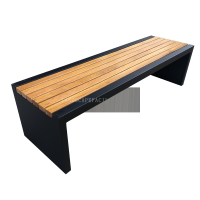Welcome to the website for landscape facilities products and knowledge.
How do landscape bar counters accommodate outdoor serving staff workflows in commercial settings?
In the dynamic world of commercial hospitality, the integration of landscape bar counters into outdoor spaces represents a significant evolution in service design. These elongated, often linear structures are not merely aesthetic additions but crucial operational hubs that fundamentally reshape how serving staff navigate their workflows in al fresco environments. Unlike traditional square or circular bars, landscape counters—typically stretching along terraces, pool decks, or garden perimeters—create a distributed service model that minimizes congestion and maximizes efficiency.
The primary workflow accommodation lies in the strategic zoning of the counter itself. A well-designed landscape bar is divided into dedicated sections: a preparation zone with integrated ice wells and speed rails, a dispensing zone with multiple taps and pour points, and a transaction zone equipped with portable payment terminals. This linear segmentation allows multiple staff members to operate simultaneously without cross-interference, effectively creating parallel workflow paths. For instance, one attendant can handle beverage preparation while another processes payments, all while maintaining a continuous service front for customers.
Ergonomics play a pivotal role in these designs. The height and depth of landscape counters are calibrated for standing service, reducing the need for bartenders to bend or overreach. Lowered sections or cut-away areas are often incorporated at strategic intervals, allowing staff to engage directly with customers while maintaining access to tools and ingredients beneath the counter. This design significantly reduces physical strain during extended service periods and accelerates order fulfillment—a critical factor in high-volume outdoor settings where weather and ambient conditions can affect service pace.
Material selection further enhances workflow efficiency. Durable, non-porous surfaces like quartz composite or treated teak require minimal maintenance and withstand constant exposure to elements, allowing staff to focus on service rather than upkeep. Integrated drainage channels and concealed waste disposal systems maintain cleanliness without disrupting the service flow, while built-in refrigeration units placed at strategic intervals eliminate the need for staff to repeatedly return to indoor stations.
Technology integration transforms these counters into smart service platforms. Wireless ordering systems sync directly with station-mounted tablets, enabling staff to receive and process orders from anywhere along the counter's length. Under-counter power outlets support blenders, card readers, and lighting without creating trip hazards or cable clutter. This technological embedding allows servers to remain positioned within their service zones throughout their shifts, dramatically reducing unnecessary movement.
The linear layout also facilitates a more intuitive customer-staff interaction pattern. Rather than converging on a central point, customers naturally distribute themselves along the counter's length, which staff can monitor through a concept known as "visual management." This sweeping sigh line allows a single attendant to assess needs across a broad area—identifying who requires ordering assistance, who is waiting for payment, and who needs a refill—all without moving from their station.
In high-capacity venues, these counters often incorporate "express service" segments dedicated to specific beverage categories (e.g., beer-only or cocktail-only stations). This specialization allows staff to develop muscle memory and efficiency with a limited set of tools and ingredients, further accelerating service times. The linear design also simplifies restocking procedures, as back-of-house access points can be positioned at both ends and mid-points, preventing interruptions to the customer-facing service flow.
Climate adaptability features also contribute to workflow continuity. Integrated misting systems or overhead radiant heaters ensure staff comfort during temperature extremes, maintaining performance levels. Strategic shading elements reduce glare on digital screens and prevent rapid ice melt, while waterproof storage niches keep towels and tools dry and accessible during unexpected weather changes.
Ultimately, the landscape bar counter succeeds by transforming outdoor service from a series of disjointed tasks into a streamlined, continuous motion. By aligning physical infrastructure with human movement patterns and technological supports, these designs reduce average service time by up to 40% compared to traditional outdoor bars. They represent a sophisticated understanding that in commercial outdoor settings, workflow efficiency isn't just about speed—it's about creating resilient, adaptable systems that empower staff to deliver exceptional service regardless of environmental challenges.
Related search:

Recommendation
Modern Stainless Steel Begonia Wood Park Chair Outdoor Courtyard Leisure Sun Protection Bench Long Seat